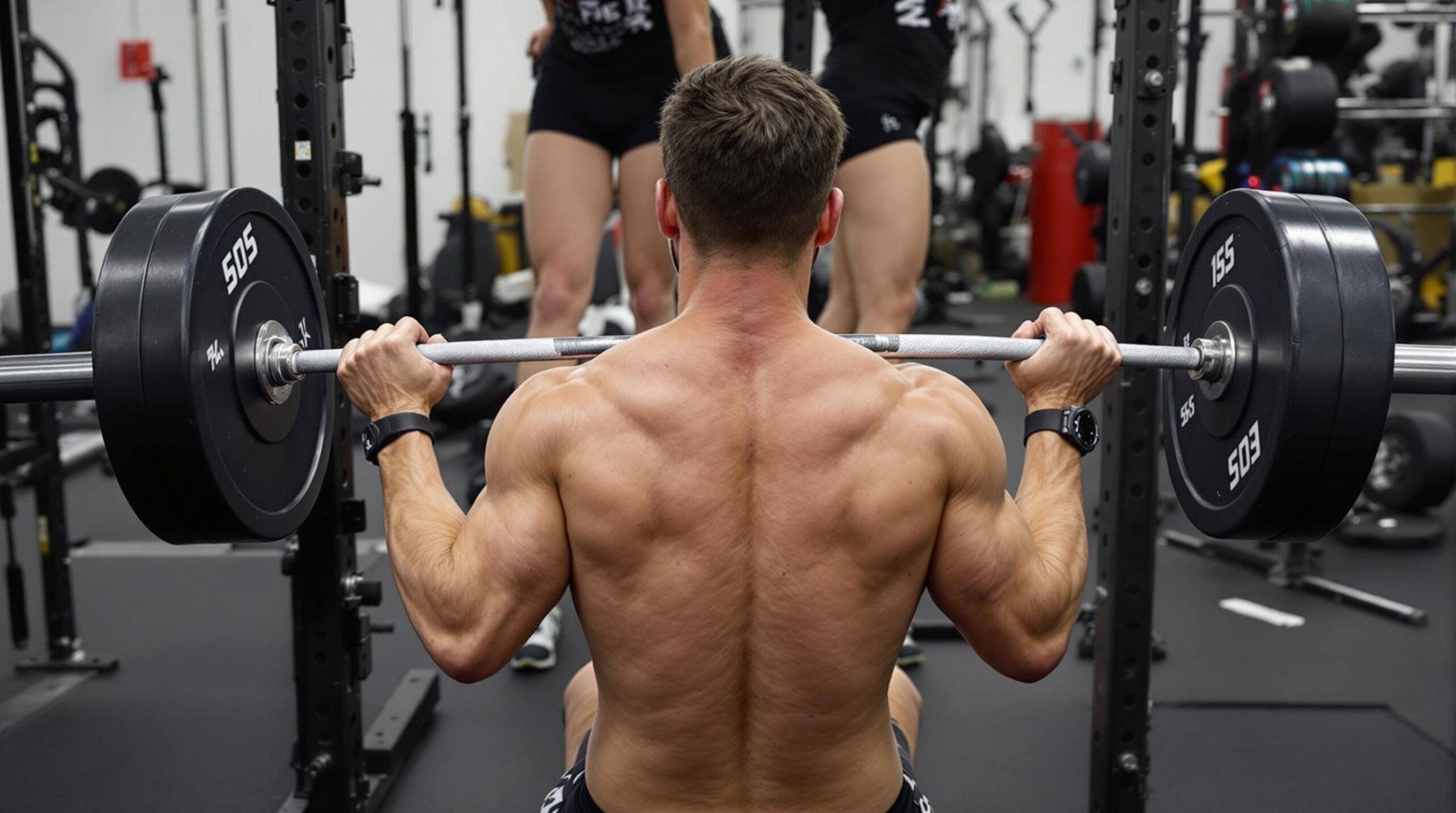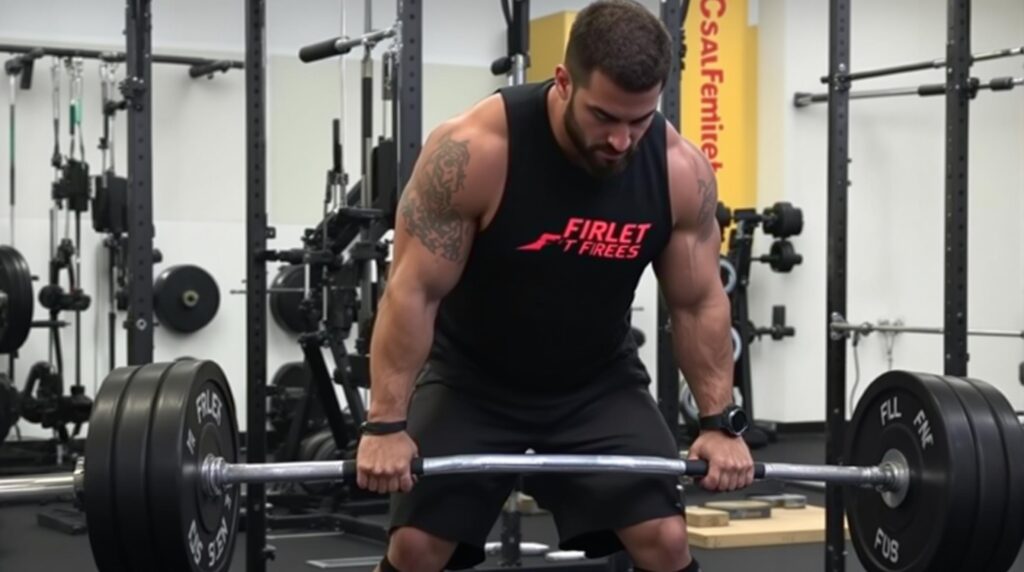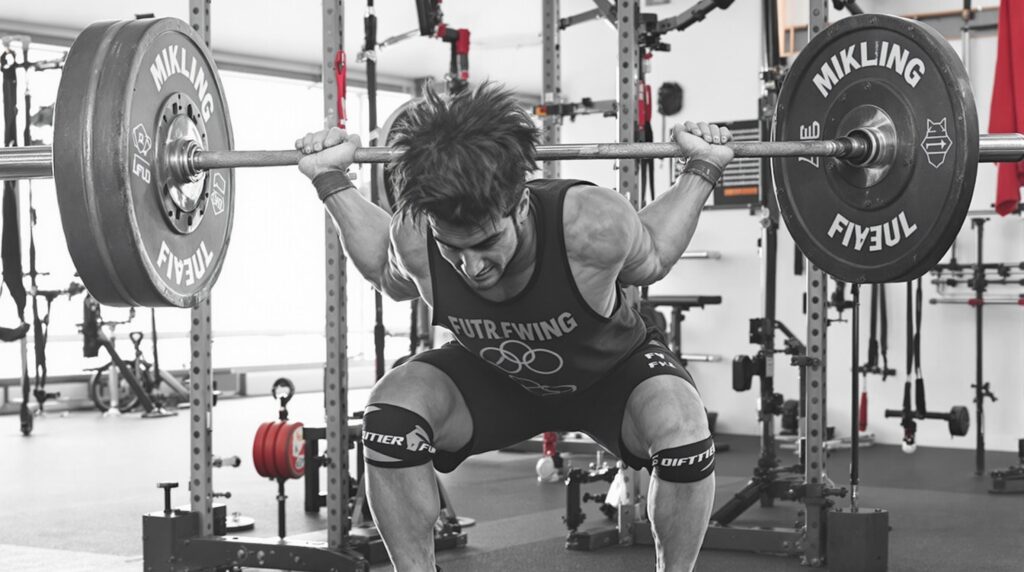The barbell pull stands as a cornerstone of strength training, activating over 85% of the body’s total muscle mass while developing both functional strength and explosive power. Master these compound movements and you’ll not only develop a stronger posterior chain but also improve athletic performance across virtually all sports and physical activities.
Key Takeaways
- Barbell pull exercises engage your entire posterior chain and can help prevent injuries through proper biomechanics
- Training at 30-40% of your 1RM can maximize explosive power output for athletic performance
- The most effective barbell pulls include deadlifts, rows, and clean pulls, each targeting different muscle groups
- Proper periodization between strength, hypertrophy, and power phases creates optimal strength gains
- Using equipment like hex bars and lifting straps can enhance your barbell pull performance when used appropriately
Understanding the Power of Barbell Pulls
The barbell pull family of exercises represents some of the most effective movements for total-body strength. These compound lifts engage multiple muscle groups simultaneously, making them extremely time-efficient and functional. Despite their benefits, 80% of American adults fail to meet basic muscle-strengthening guidelines, putting themselves at increased risk for injury during everyday movements.
What makes barbell pulls so effective? They mimic natural human movement patterns like picking objects up from the ground or pulling things toward your body. When performed correctly, these exercises activate your posterior chain—the powerful muscles running along the back of your body including your glutes, hamstrings, and lower back—while also engaging your upper back, arms, and core stabilizers.
For athletes seeking explosive power development, barbell pulls offer unmatched benefits. Research shows that training these movements at 30-40% of your one-rep maximum (1RM) can optimize power output. For optimal adaptation, aim for 24-48 total lifts per workout focused on these movements. This approach has been proven to develop the kind of functional strength that transfers directly to athletic performance, as highlighted in several studies on Olympic lift benefits for athletes.

The Science Behind Barbell Pulls: Anatomy and Biomechanics
Understanding the muscular engagement patterns in barbell pulls helps optimize your training. Primary muscles worked include the latissimus dorsi (lats), trapezius (traps), erector spinae, glutes, and hamstrings. Secondary muscles include the biceps, forearms, and various core stabilizers that maintain posture throughout the movement.
Proper biomechanics are crucial for both safety and effectiveness. The hip hinge movement forms the foundation of most barbell pulls. This involves pushing your hips backward while maintaining a neutral spine, creating tension in your posterior chain. Unlike a squat, which relies primarily on knee flexion, the hip hinge emphasizes hip flexion with minimal knee bend.
For optimal barbell pull mechanics, focus on these key principles:
- Maintain a neutral spine throughout the movement
- Create a vertical bar path directly over your mid-foot
- Generate force through your hips and legs before engaging upper body muscles
- Keep the weight close to your center of gravity
- Engage your lats to stabilize the bar path
Different pulls engage muscles in varying patterns. For instance, barbell rows emphasize upper back musculature, while deadlifts distribute tension more evenly across the entire posterior chain. Clean pulls add the explosive element of triple extension (simultaneous extension of ankles, knees, and hips) for maximum power output, similar to techniques used by world record holders in competitive lifting.
Essential Barbell Pull Techniques Breakdown
Barbell Row Specifics
The barbell row serves as a fundamental horizontal pulling movement. Start with a medium grip width—typically shoulder-width or slightly wider. Position your torso approximately 15° above parallel to the floor, maintaining a flat back. Pull the bar toward your lower chest, keeping your elbows at roughly a 45° angle to your body.
According to Stronglifts, proper execution requires scapular retraction—squeezing your shoulder blades together at the top of the movement. Common errors include excessive torso movement, flaring elbows outward, and improper grip width. For strength development, 5 sets of 5 reps works effectively within a progressive overload framework.
Deadlift Form
The deadlift stands as perhaps the most fundamental barbell pull. Begin with the bar positioned over mid-foot, grip just outside your legs, and hips higher than in a squat position but lower than parallel to the ground. The movement follows a vertical bar path as you stand up by driving through your heels.
For optimal strength development, program deadlifts at 70-80% of your 1RM for 3-5 reps. The lockout should involve a hip thrust motion rather than excessive backward lean. According to Texas Family Fitness, maintaining a neutral spine throughout the movement is critical for safety and performance.
Clean Pull Mechanics
The clean pull breaks down into three distinct phases:
- First pull: From floor to knees, maintaining back angle
- Second pull: From knees to mid-thigh (power position)
- Third pull: Explosive triple extension of ankles, knees, and hips
As MasterClass explains, the clean pull develops explosive power without requiring the technical complexity of catching the bar. Train this movement at 55-65% of your clean 1RM for 3-5 reps, focusing on acceleration rather than load. The most common error is rushing the first pull instead of building momentum gradually through each phase.
Game-Changing Barbell Pull Variations for 2025
The standard barbell pull exercises provide an excellent foundation, but specialized variations can target specific weaknesses or goals. Here are five game-changing options for 2025:
1. Pendlay Rows
Named after coach Glenn Pendlay, these explosive chest-to-floor rows develop back power by eliminating momentum. Unlike traditional barbell rows, Pendlay rows start with the bar on the ground for each rep. The explosive concentric phase builds fast-twitch fiber recruitment, making them ideal for athletes in sports requiring quick pulling actions.
2. Trap Bar Deadlift
The trap bar (hex bar) deadlift reduces spinal shear force by 15-20% compared to conventional deadlifts, making it joint-friendly while still providing substantial loading. The neutral grip and centered body position make this variation particularly valuable for athletes seeking strength development with reduced injury risk.
3. Snatch-Grip Deadlift
By widening your grip significantly beyond shoulder width, the snatch-grip deadlift increases range of motion and upper back engagement. This variation forces a more horizontal back angle, placing greater emphasis on the upper back musculature while still training the entire posterior chain.
4. Rack Pulls
Performed from pins in a power rack, rack pulls allow for heavier loading by focusing on the top portion of the deadlift movement. This partial range of motion exercise develops lockout strength, benefiting both powerlifters and those seeking upper back development with reduced technical demands.
5. Romanian Deadlift
The Romanian deadlift (RDL) emphasizes the eccentric loading of the hamstrings by maintaining straighter legs throughout the movement. This variation is particularly effective for hypertrophy of the hamstrings and glutes while developing hip hinge mechanics crucial for athletic performance.
These variations can be incorporated into comprehensive workout plans designed to build both muscle and strength, depending on your specific goals.
Periodized Programming for Maximum Strength Gains
To maximize barbell pull results, structured periodization is essential. Rather than randomly programming these movements, organize them into distinct training phases:
Strength Phase
During strength-focused blocks, perform 3-5 sets of 3-5 reps at 75-90% of your 1RM. Rest periods should be generous—3-5 minutes between sets—to allow for complete recovery and maximum force production. Deadlifts and heavy rows form the cornerstone of this phase, with technical precision taking priority over volume.
Hypertrophy Phase
For muscle growth, increase volume with 3-4 sets of 8-12 reps per exercise, resting 60-90 seconds between sets. This phase typically includes more variations and accessory movements to target different angles and muscle fibers. The metabolic stress created during these higher-rep sets stimulates growth factors essential for hypertrophy.
Explosive Power Phase
To develop athletic power, program 6-8 sets of 2-3 reps at 30-40% of your 1RM, focusing on maximum velocity. Clean pulls, jump shrugs, and speed deadlifts work well here. According to Westside Barbell, this lighter, explosive training optimizes rate of force development—a key component of athletic performance.
A sample 4-week progressive overload program might look like this:
- Week 1: 4×5 deadlifts at 75% 1RM, 3×8 barbell rows
- Week 2: 4×5 deadlifts at 80% 1RM, 3×8 barbell rows (increase weight 5-10%)
- Week 3: 4×3 deadlifts at 85% 1RM, 4×8 barbell rows (increase weight 5%)
- Week 4: 3×2 deadlifts at 90% 1RM, 3×8 lighter barbell rows (deload)
Troubleshooting Form Issues and Fixing Technical Flaws
Even experienced lifters encounter technical issues with barbell pulls. Here are solutions for the most common problems:
Rounded Back
A rounded back during pulls indicates core weakness or poor body awareness. Implement core bracing drills like dead bugs, planks, and bird dogs. Practice the bracing sequence: inhale deeply into your belly, contract your abs as if preparing for



